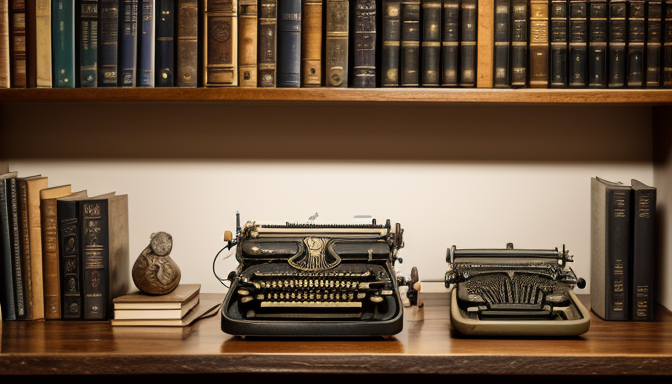Have you ever noticed how certain characters in movies, books, or games feel so familiar? That’s the magic of archetypes. These are the timeless blueprints of human experience, acting like psychological shortcuts that help us connect deeply with stories. When we dive into the world of storytelling, we find that archetypes are not just characters; they are the very essence of the narrative itself. They shape our understanding and evoke emotions that resonate across cultures and generations.
Let’s take a moment to appreciate how these archetypes build compelling characters. Think of the Hero, who embarks on a journey filled with trials, or the Mentor, who provides guidance and wisdom. Each archetype carries a rich backstory, aligning traits, and mythological influences that enhance their depth. For instance, the Hero’s journey often mirrors our own struggles, making their victories feel personal. This connection is what keeps us glued to the screen or page, eagerly turning the next chapter.
In modern storytelling, these archetypes are not just relics of the past; they are alive and thriving. From blockbuster films to best-selling novels, their presence is undeniable. Imagine a table showcasing popular archetypes:
| Archetype | Example | Significance |
|---|---|---|
| Hero | Frodo Baggins (The Lord of the Rings) | Represents courage and perseverance |
| Mentor | Yoda (Star Wars) | Embodies wisdom and guidance |
| Shadow | Darth Vader (Star Wars) | Symbolizes inner conflict and fear |
As we explore these archetypes further, it becomes clear that they are not just tools for storytelling; they are the threads that weave our shared human experience into a tapestry of understanding. So, the next time you engage with a story, pay attention to these archetypes. They might just reveal a little more about yourself along the way!
[Understanding Archetypes]
Archetypes are more than just characters; they are the building blocks of storytelling that resonate across cultures and time. Think of them as the universal symbols that evoke deep emotions and connections with audiences. These archetypes have been around for centuries, originating from ancient myths and legends, and they continue to shape narratives today. Each archetype embodies specific traits and backstories that make them relatable, allowing readers and viewers to see a piece of themselves in these characters.
For instance, consider the Hero archetype, often depicted as brave and selfless. This character’s journey, filled with trials and tribulations, mirrors our own struggles and aspirations. On the other hand, the Mentor provides wisdom and guidance, representing the figures in our lives who help us navigate challenges. These archetypes not only enhance storytelling but also create a psychological impact that lingers long after the story ends.
Archetypes can be categorized into several key types, including:
- Hero – The brave protagonist who embarks on a journey.
- Villain – The antagonist who opposes the hero.
- Mentor – The wise advisor who guides the hero.
- Trickster – The character who challenges the status quo.
By weaving these archetypes into narratives, storytellers create rich, multifaceted characters that not only entertain but also resonate on a deeper level, making the audience reflect on their own lives and experiences. The timeless appeal of archetypes lies in their ability to transcend cultural boundaries and tap into the shared human experience.
![[Archetypes in Contemporary Media]](https://www.domwiki.org/wp-content/uploads/2025/04/the-power-of-archetypes-in-modern-storytelling_2.png)
[Archetypes in Contemporary Media]
In the vibrant tapestry of modern storytelling, archetypes play a pivotal role in crafting characters that resonate deeply with audiences. These archetypes are not just mere templates; they are the foundation upon which compelling narratives are built. Think of them as the blueprints for our favorite heroes and villains, each with rich backstories and unique alignment traits that reflect our own struggles and aspirations.
Take, for instance, the classic Hero archetype, often characterized by bravery and a quest for justice. This character type is prevalent in films like “The Avengers,” where each hero embodies distinct traits from their mythological roots. Iron Man, with his genius intellect and flawed humanity, showcases the complexity of the Hero archetype, making him relatable and inspiring. Meanwhile, the Mentor archetype, seen in characters like Yoda from “Star Wars,” provides wisdom and guidance, helping heroes navigate their journeys. These characters are not just there to fill roles; they are integral to the emotional landscape of the story.
Moreover, contemporary media utilizes archetypes to create dynamic relationships and tension. The interplay between the Hero and the Shadow archetype, for example, highlights internal conflicts that mirror our own fears and desires. This method of storytelling not only captivates audiences but also invites them to reflect on their personal journeys. As we engage with these narratives, we find ourselves drawn into a world where archetypes help us understand the complexities of human nature.
Frequently Asked Questions
- What are archetypes in storytelling?
Archetypes are universal symbols or character types that represent fundamental human experiences. They help to convey deep meanings and emotions, making stories relatable and engaging across different cultures and time periods.
- How do archetypes enhance modern narratives?
Archetypes enhance narratives by providing familiar frameworks that resonate with audiences. They create connections, evoke emotions, and simplify complex themes, making it easier for readers and viewers to engage with the story.
- Can you give examples of archetypes in popular media?
Absolutely! Think of the Hero in “The Lord of the Rings,” the Mentor in “Star Wars,” or the Villain in countless superhero films. These archetypes are instantly recognizable and help to shape the viewer’s experience and expectations.
- Why are archetypes still relevant today?
Archetypes remain relevant because they tap into our shared human experiences. They resonate on a psychological level, allowing storytellers to connect with audiences in a way that feels both timeless and contemporary.

Recent Comments